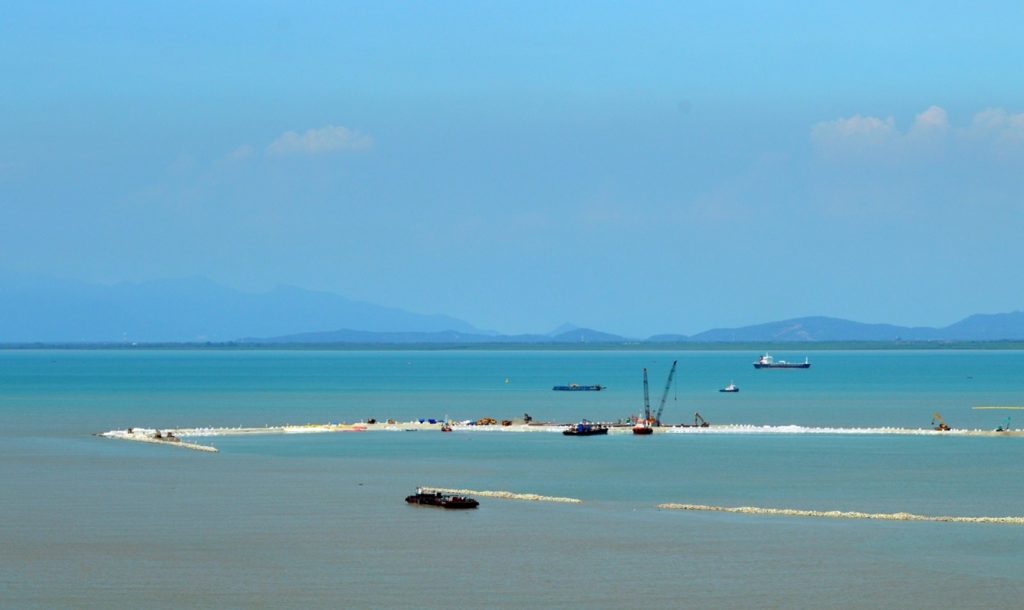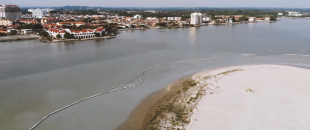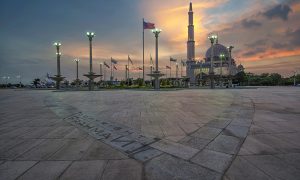In Malaysia, there is now a tendency towards the making of large-scale artificial islands. While recognising that land reclamation has a long history in Malay Peninsula, the current trend of creating more land mass in the sea shows rather a new logic of land-based development. Several major Malaysian cities are reclaiming land along coastlines, envisioning futuristic island-cities with iconic architecture. However, these artificial islands are, ironically, built neither for an increasing urban population, nor tackling scarcity of land for food production.
The attempt to reclaim offshore islands is bound up with new state interventions to generate extra-budgetary revenue, while also demanding of greater state autonomy. Large-scale reclamation projects enable subnational governments to engage more ambitiously and aggressively with the business of land-banking, while expanding the territory of their governance. In Malaysia state authorities have the ultimate power in legislating and undertaking land reclamation projects.
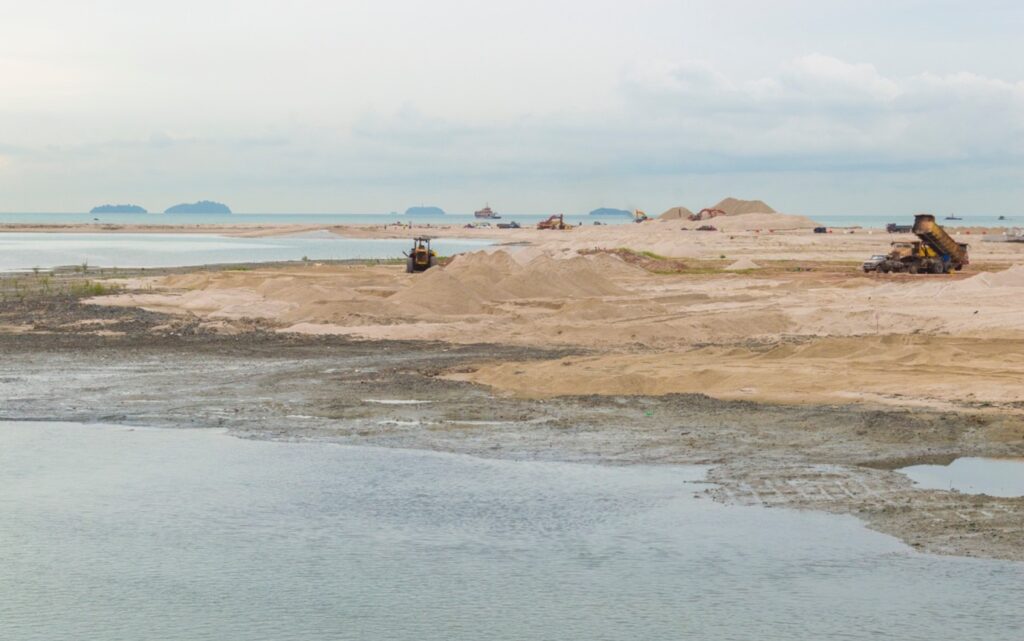
The Melaka Gateway, reclamation work has been carried out along the shoreline (source: author)
To date, there are three on-going large-scale artificial island-making projects in Malaysia. The Melaka Gateway is an integrated deep-sea-port, named as the largest and most ambitious of China’s Belt and Road initiatives in Malaysia; Penang South Islands is a proposal to reclaim three artificial islands to fund the Penang Transport Master Plan; Johor’s Forest City, with close proximity to Singapore, is a new overseas property investment enclave primarily for PRC investors. Despite these projects being initiated for different political-economic reasons and contexts, they are all dependent on the speculative nature of urban development with strong governmental support at the subnational level.
How has reclaimed land turn into a new growth machine? Acting as both fixed asset and visionary resource for the state leaders (also local political and business elites) to restructure land development policy, these island-making projects are designed to boost state coffers through immediate land sales, as well as long-term annual land-and-property tax revenue. Most importantly, these game-changing projects should be seen as a new governing tool which upholds state economic growth and the illusive promise of future cities, at the same time enabling land-use planning to become more spatially and institutionally unfixed.
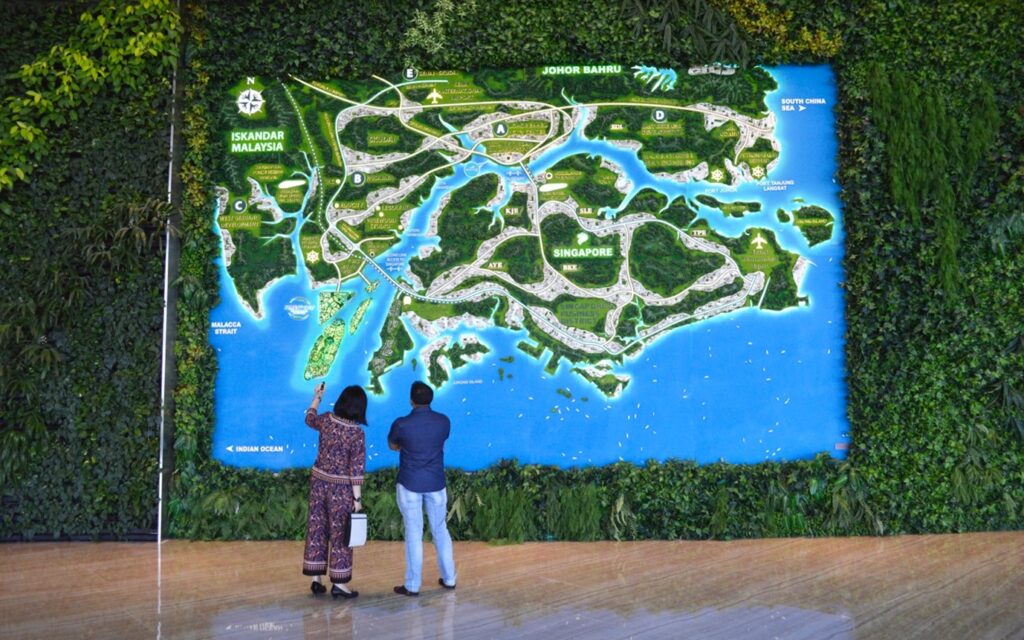
At the sales gallery of Forest City, sale personnel explain the development to a potential home buyer by pointing to a massive Johor-Singapore regional map (source: author)
Ambiguous characteristics
Island-making projects are not without doubts and controversies. Indeed, they represent a colossal misappropriation of resources at a time of intensifying housing inaffordability and social injustice. Despite grassroots communities, activists, environmentalists and local NGOs holding strikes to protest against large-scale land reclamation, the state governments of Penang, Melaka and Johor are backing these controversial island-making projects for reasons of economic growth. The promise of accelerating growth, however, is questionable. Because island-making projects which are invariably imbued with vacuous concept, speculative rhetoric and utopian imagination there is almost nothing the governments confidently promised based on the masterplan design.
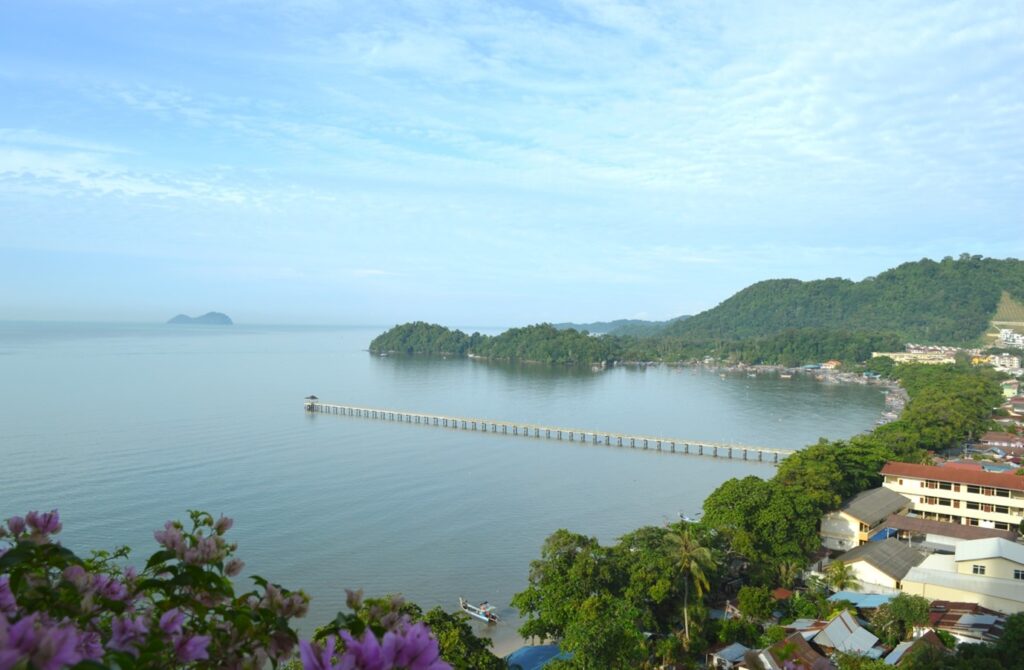
According to the plan of Penang Government, pristine bay in the south of Penang Island will soon be dismissed by three large-scale man-made islands (source: author).
In producing this kind of visionary masterplan, there is an inexactness of long-term planning in a vision spanning 20 to 30 years until its completion. With the notion of “reclaim first and develop later”, all planning ideas and development programs are subject to change. Unlike some common land types such as crop land, rural land, and nature reserved land, the status of reclaimed land is not legally bonded but amendable for any future alterations. To this end, the state government could deploy the special status of offshore islands to create many different “themed spaces”, for example, innovative leisure hubs, luxury property exclaves, central business districts, tax-free havens and experimental laboratories for green-and-smart city design.
Offshore islands are explicitly designed to transcend the existing land limitations and increasing turbulence in emerging modes of urban speculation. Island-cities are planned with new boundaries which are distanced or disconnected from their adjacent mainland. This development strategy allows a greater level of flexibility in terms of city planning and land management. It makes it easier for developers to shape new land with various profit-making programmes.
Further, undertaking reclamation appears less socially and politically controversial, partly due to weak civil society in most Malaysian cities. By avoiding the politics of land dispossession and instead creating futuristic architectural ideas of smart/green-cities, artificial islands are promoted as the mirage of “progress without crisis“. In other words, governments tend to by-pass the struggle between use value and exchange value in these projects by substituting with the symbolic, yet ambiguous value of a “future city”.
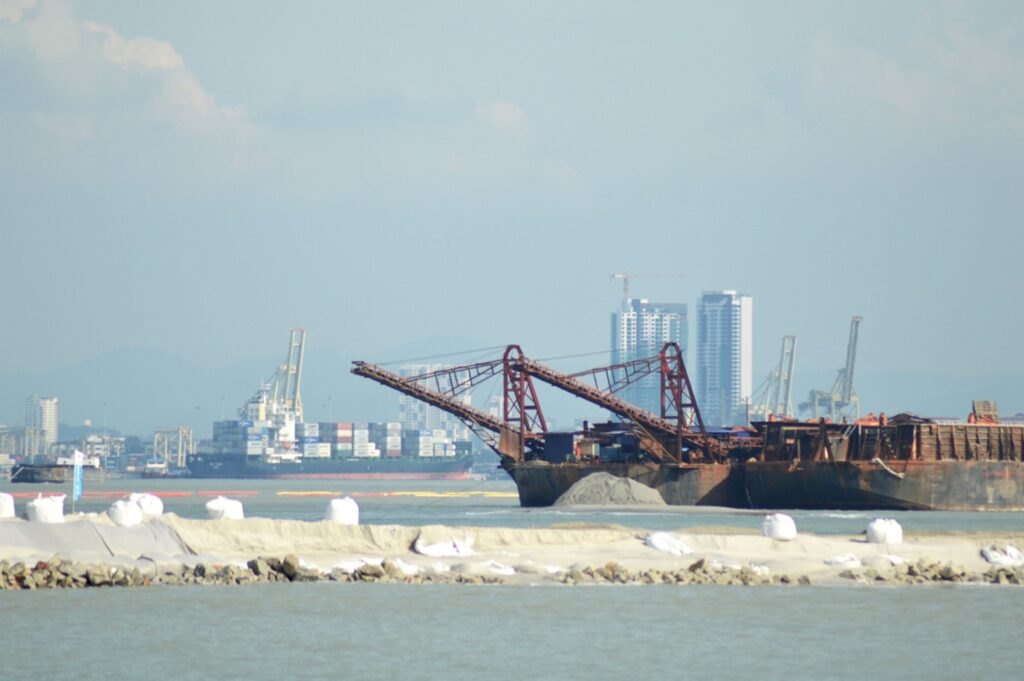
New artificial islands becomes a development tool for the state governments to seek for revenue maximisation by controlling ownership and development programs (source: author).
The quest for state autonomy
After independence in 1954, land reform played an important part in nation-building, characterised by race-based distribution policies such as the formation of Malay-reserved land. Due to Malaysia’s strong federal governing system, it has granted authority for the central governments to (re)form land policies and administration services, despite issues of land rights and social inequality remaining largely unresolved.
Shifting from the practice of land dispossession to land reclamation opens up new ways of restructuring federal-state relations. Land reclamation initiatives seek to side-step national regimes which had previously constrained the autonomy of local governments. The tightening of subnational power over land reclamation allows new configurations of local state economy, in opposition to the highly centralised control of fiscal distribution by the federal government.
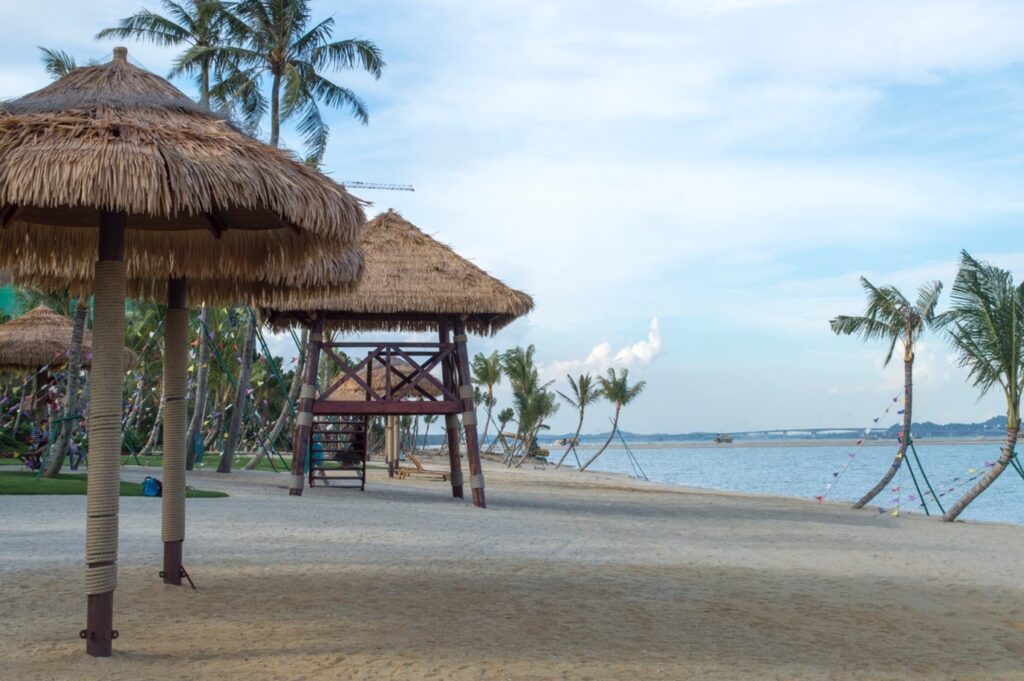
Artificial beach made for leisure space in Forest City, with on-going reclamation work and Malaysia-Singapore Second-Link shown in the backdrop (source: author).
With the entanglement of particular modes of long-term, flexible governance over offshore islands, subnational governments and their state-owned enterprises can manipulate business-government relations without much interference from Putrajaya. Island-making projects involve a wide spectrum of state and non-state actors, ranging from state-linked investment agencies, real estate developers, sand-miners, and infrastructure companies. It is contended that such development coalitions can no longer be narrowly defined as public-private partnerships. Rather, the business-government nexus is rooted in much more complex patronage relationships to which government agencies, local authority, and business partners have sought to control land-based development at full power.
The Melaka Gateway is threatening the livelihood of a seaside community that is now leveraging its Portuguese–Malay roots to survive.
Reclaiming the sea from the Melaka Gateway
Land reclamation is bound up with the complexity of strategies and resources of power appointments. In Malaysia, the practice of patronage, or as what Kunio Yoshihara termed “ersatz capitalism”, has long been involved the distribution of individual or collective “favours” by UMNO-supported cronyism or patronage networks which controlled governmental powers and economic resources to gain electoral votes. Today, the effects of patronage are contingent on a wide range of actors and agencies involved in these island-making projects. While creating a dynamic state-centric capitalism, subnational governments also tend to create their own tactical patronage system of hiring and collaborating, in which federal-state relations were reconfigured.
The recent island-making projects in Malaysia do not merely expose concerns over environmental crises and socio-spatial justice, they also show an emerging tendency towards political decentralisation. This new form of subnational regime propelled by the state governments’ oversight of land reclamation projects, though still constrained by the federation constitution, has been modified by increased levels of autonomy and authority. Land reclamation can no longer be purely understood in economic terms, and in this sense, is becoming governance.
 Facebook
Facebook  Twitter
Twitter  Soundcloud
Soundcloud  Youtube
Youtube  Rss
Rss 